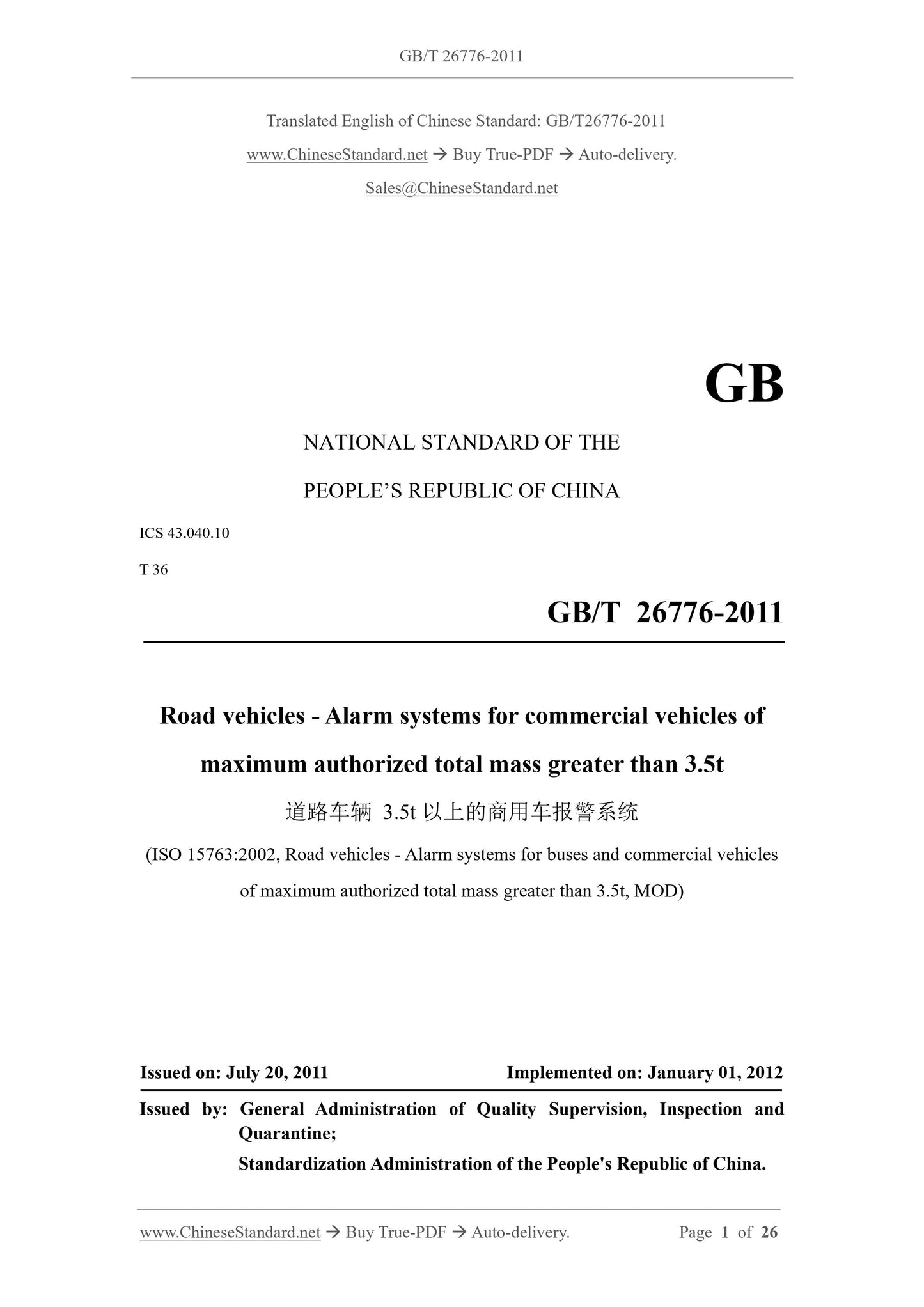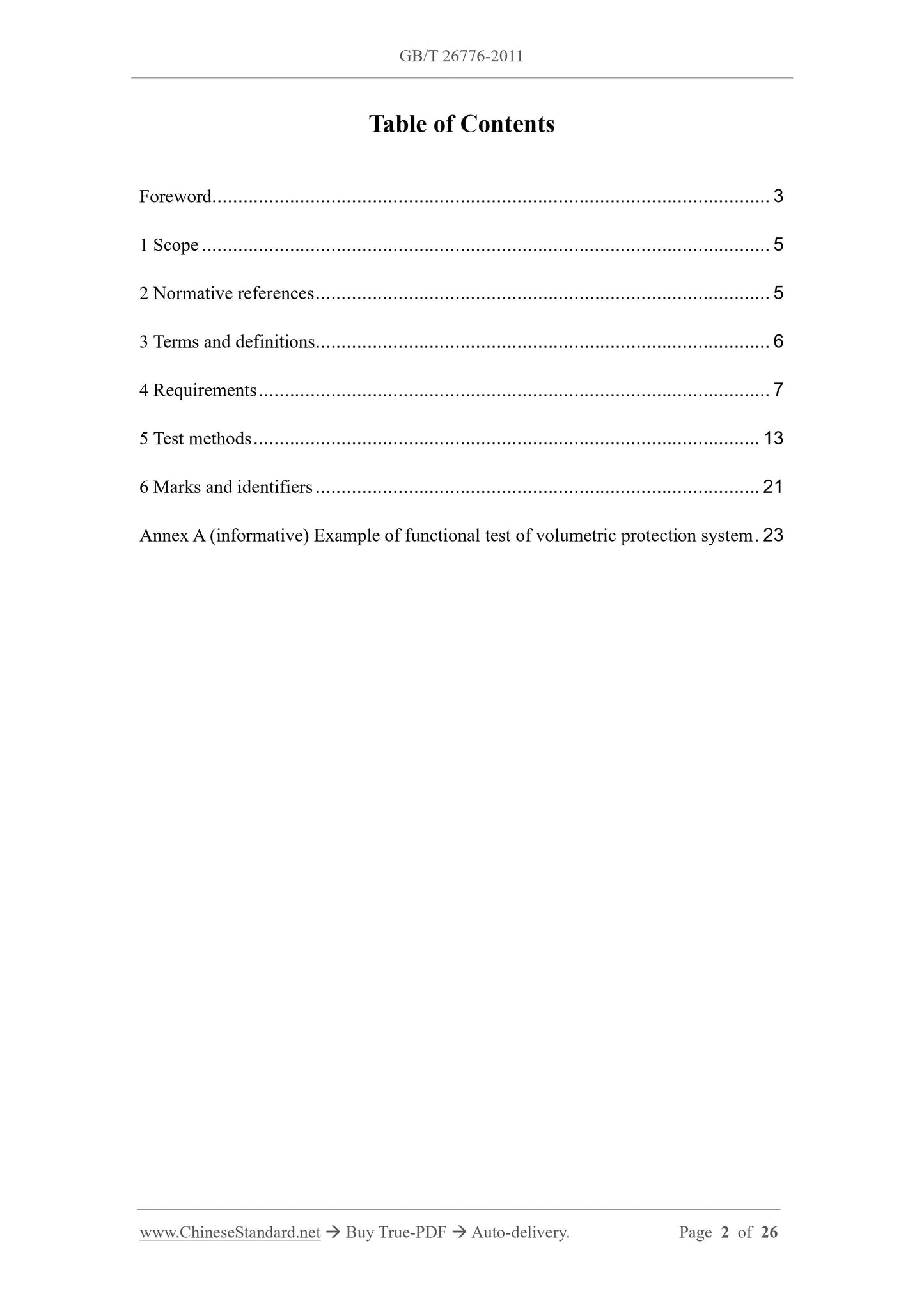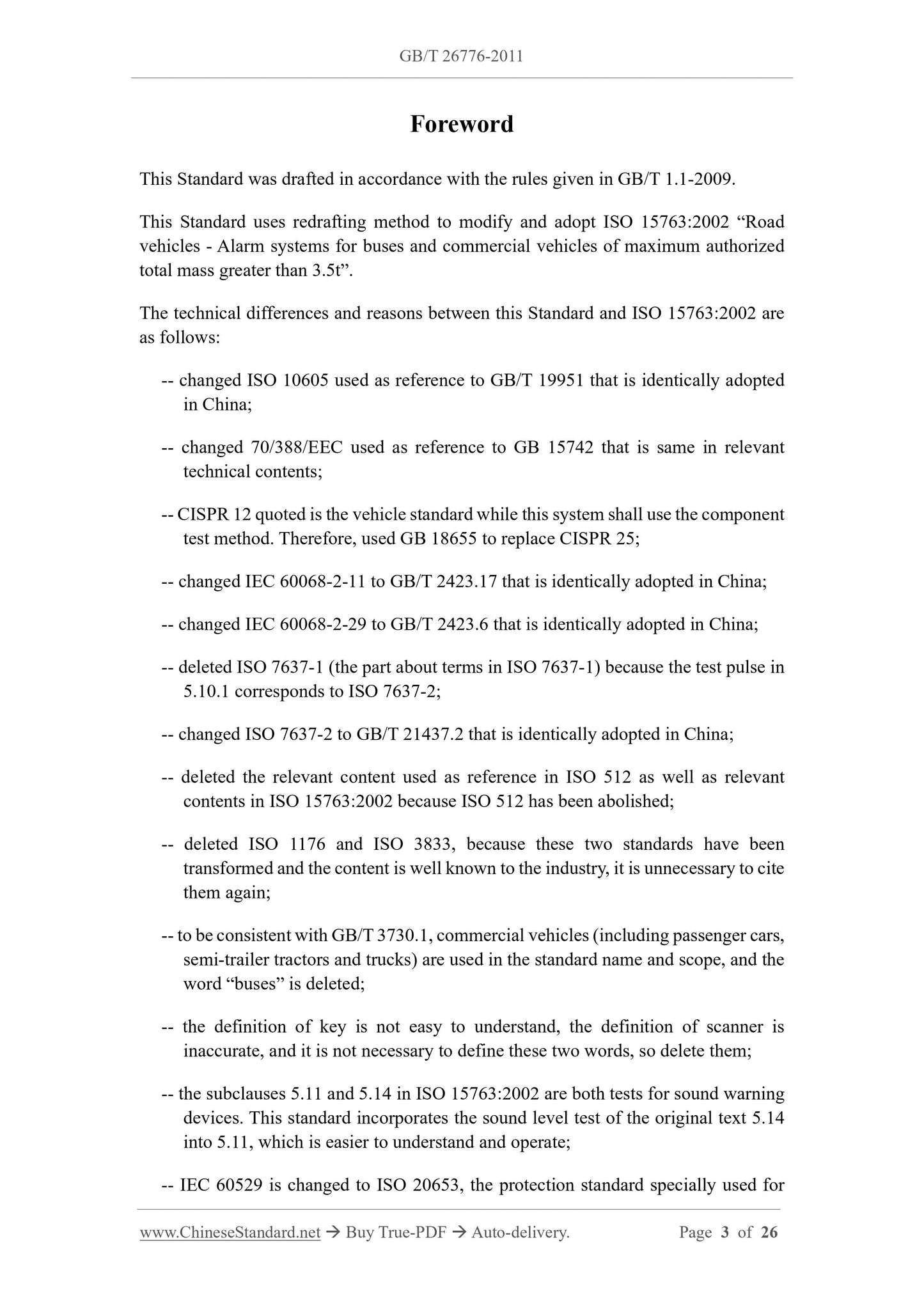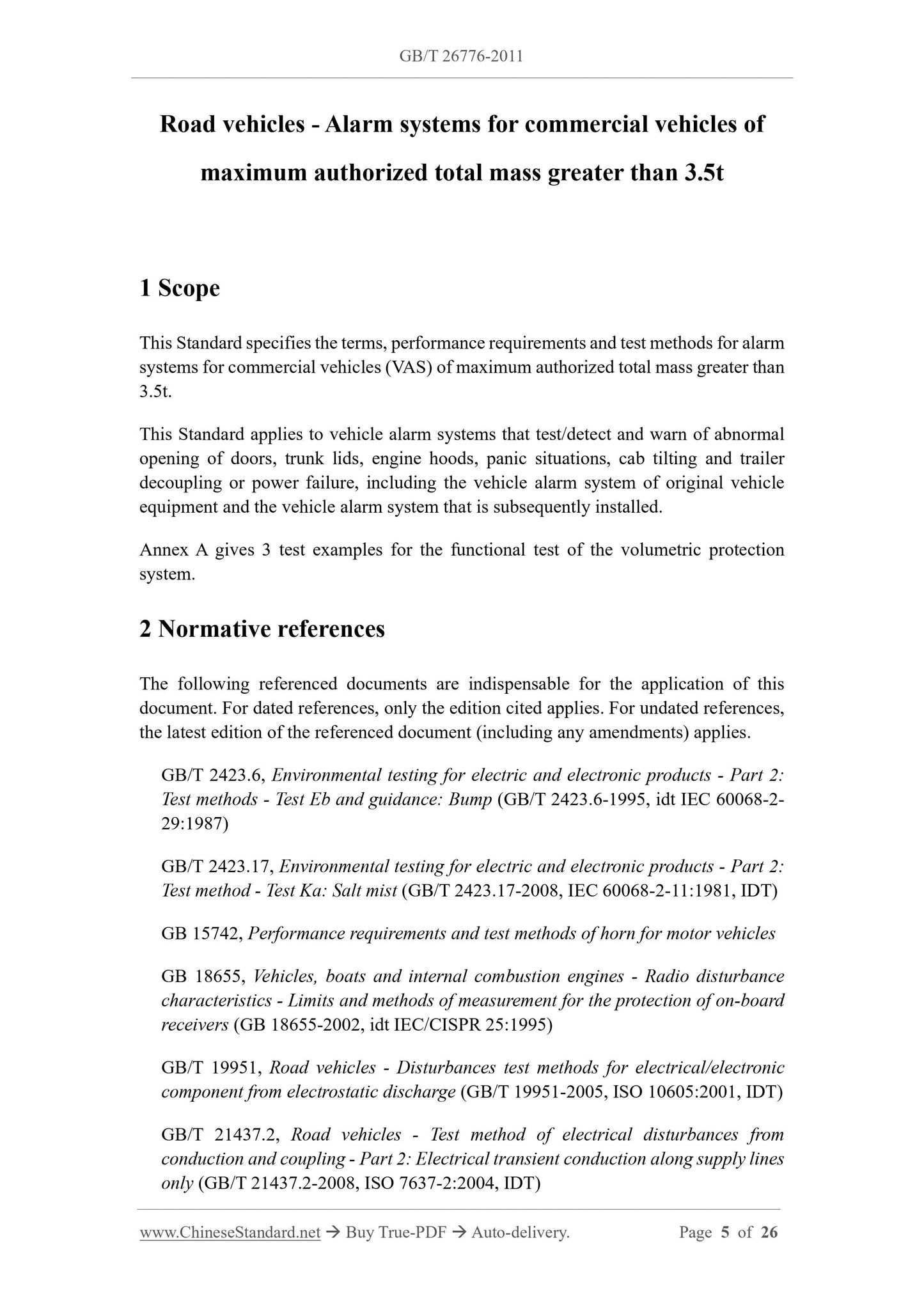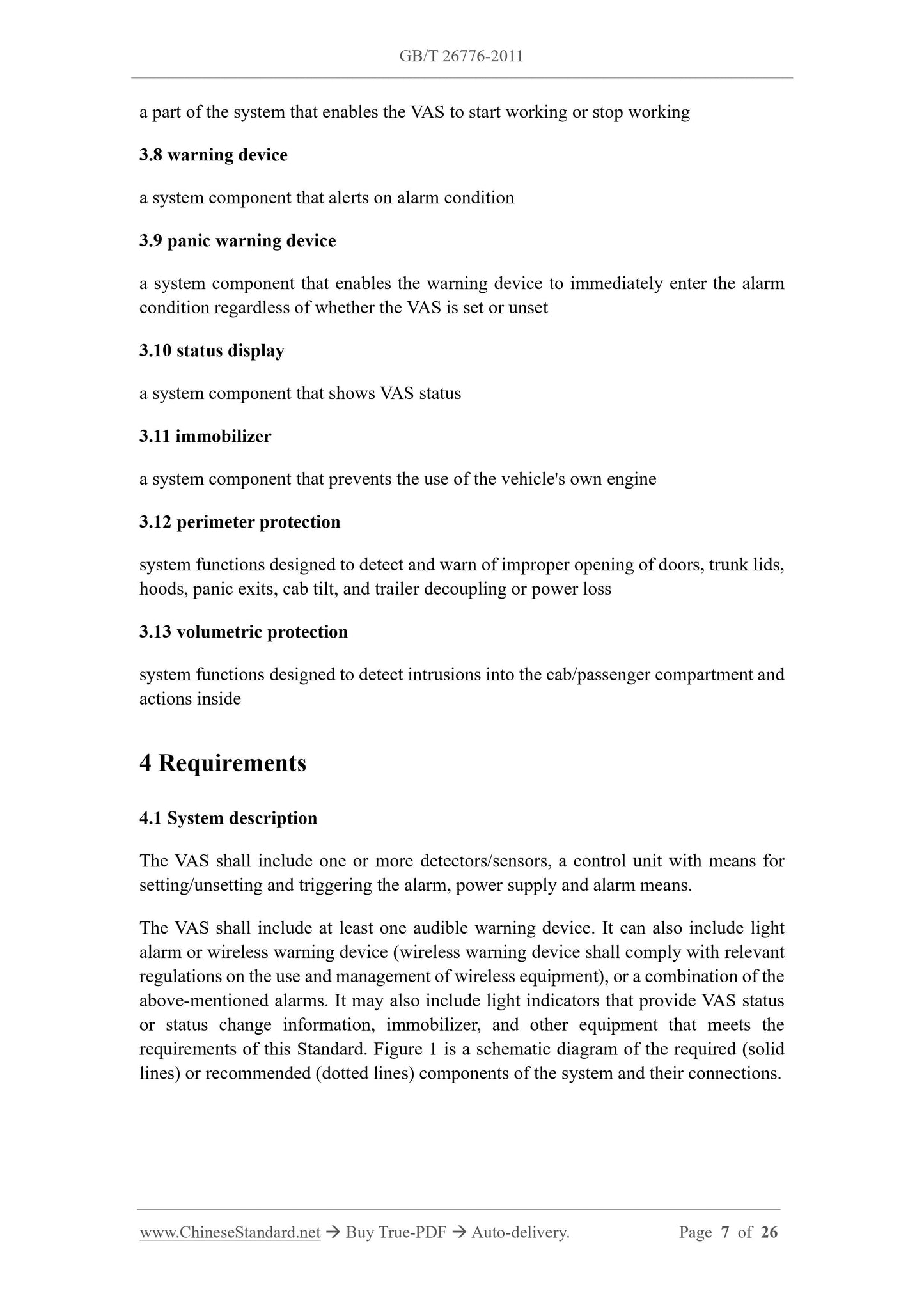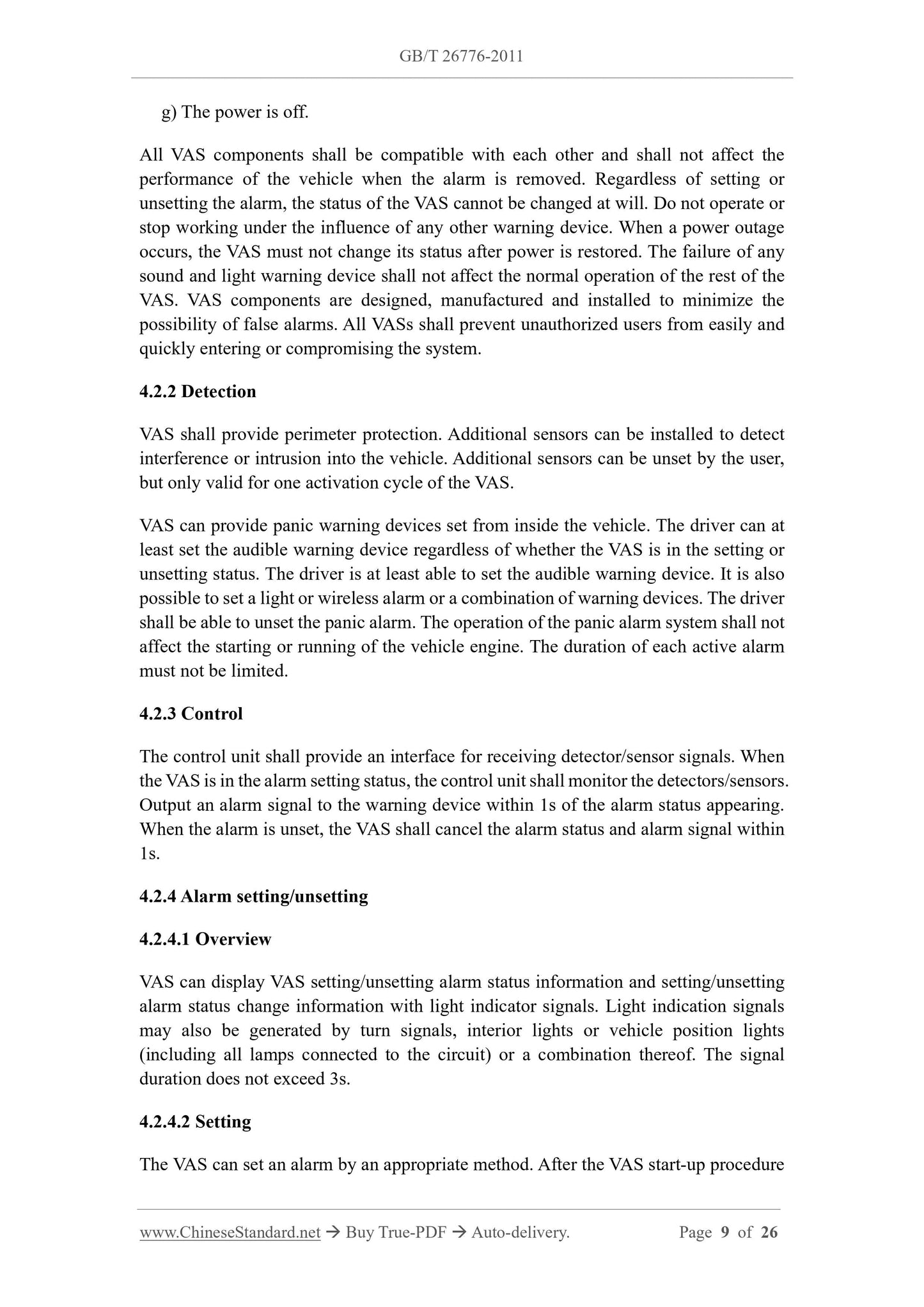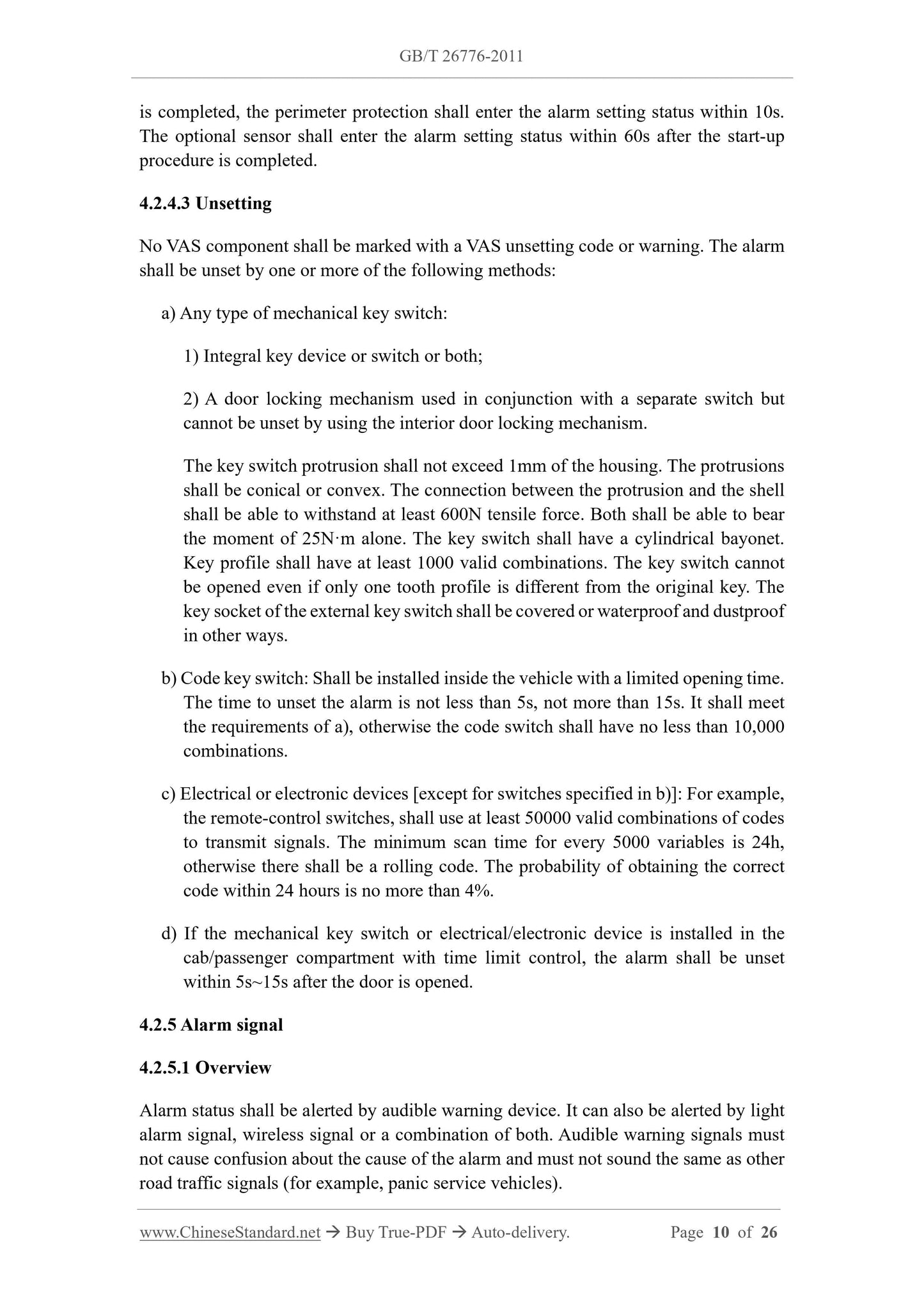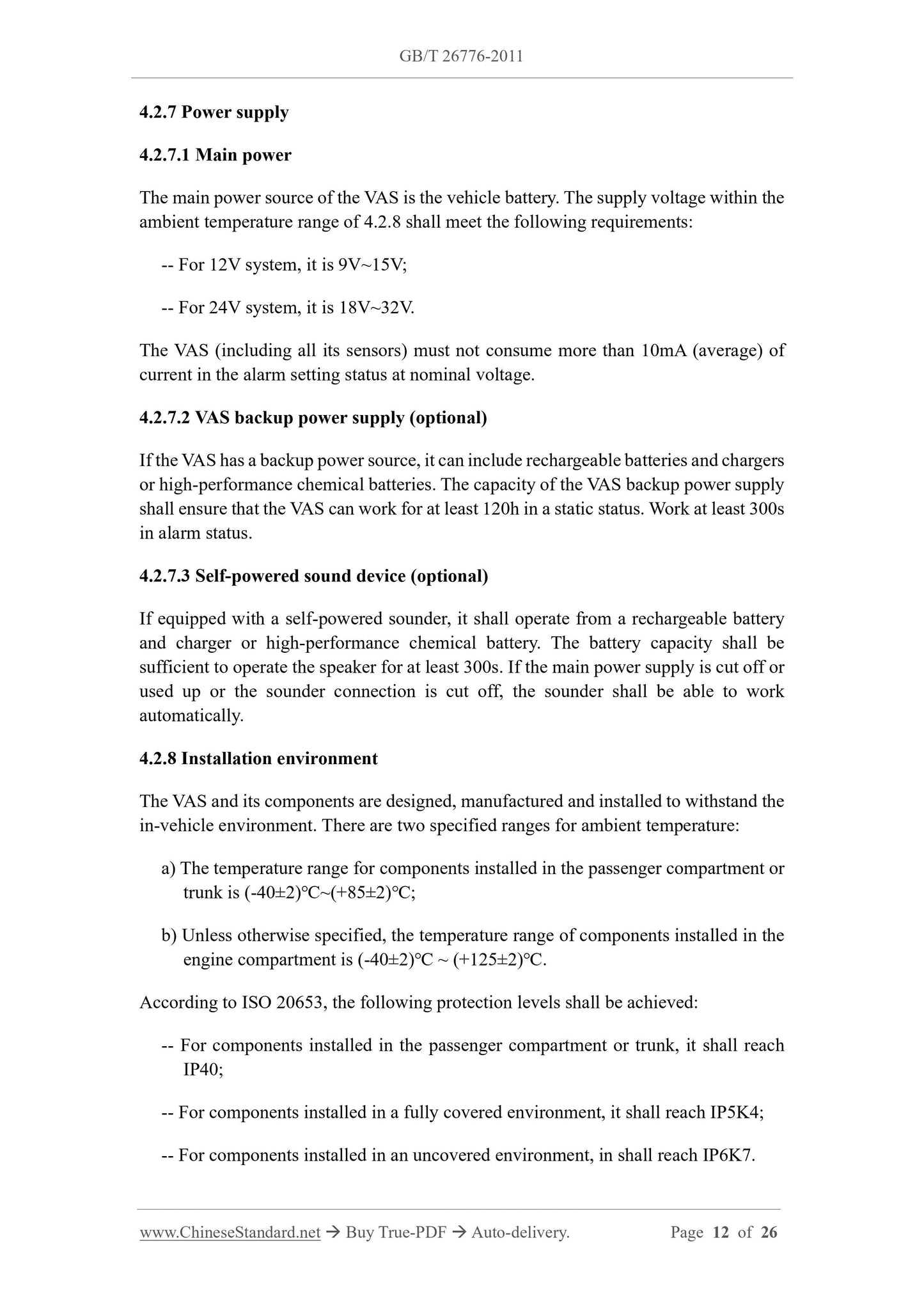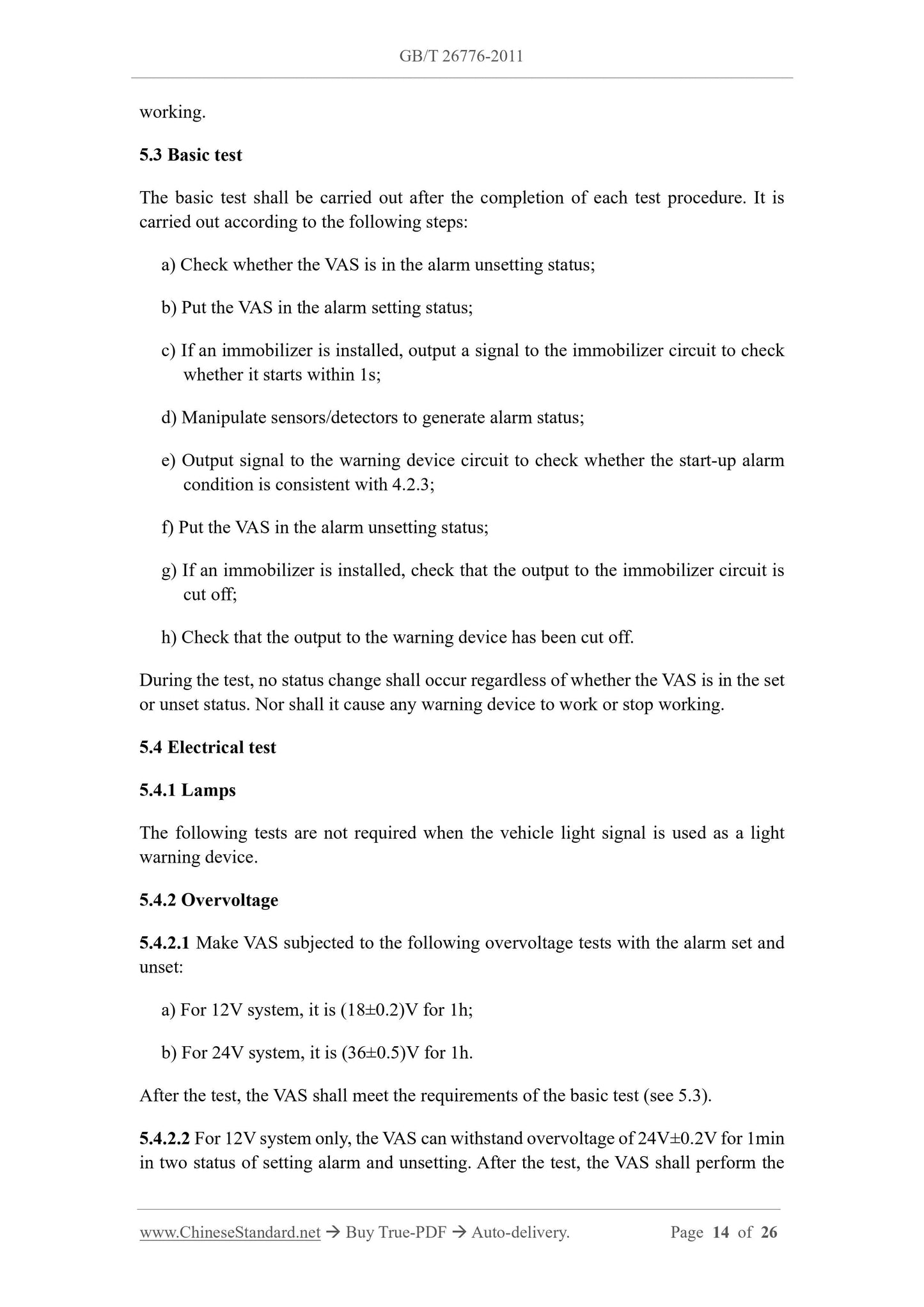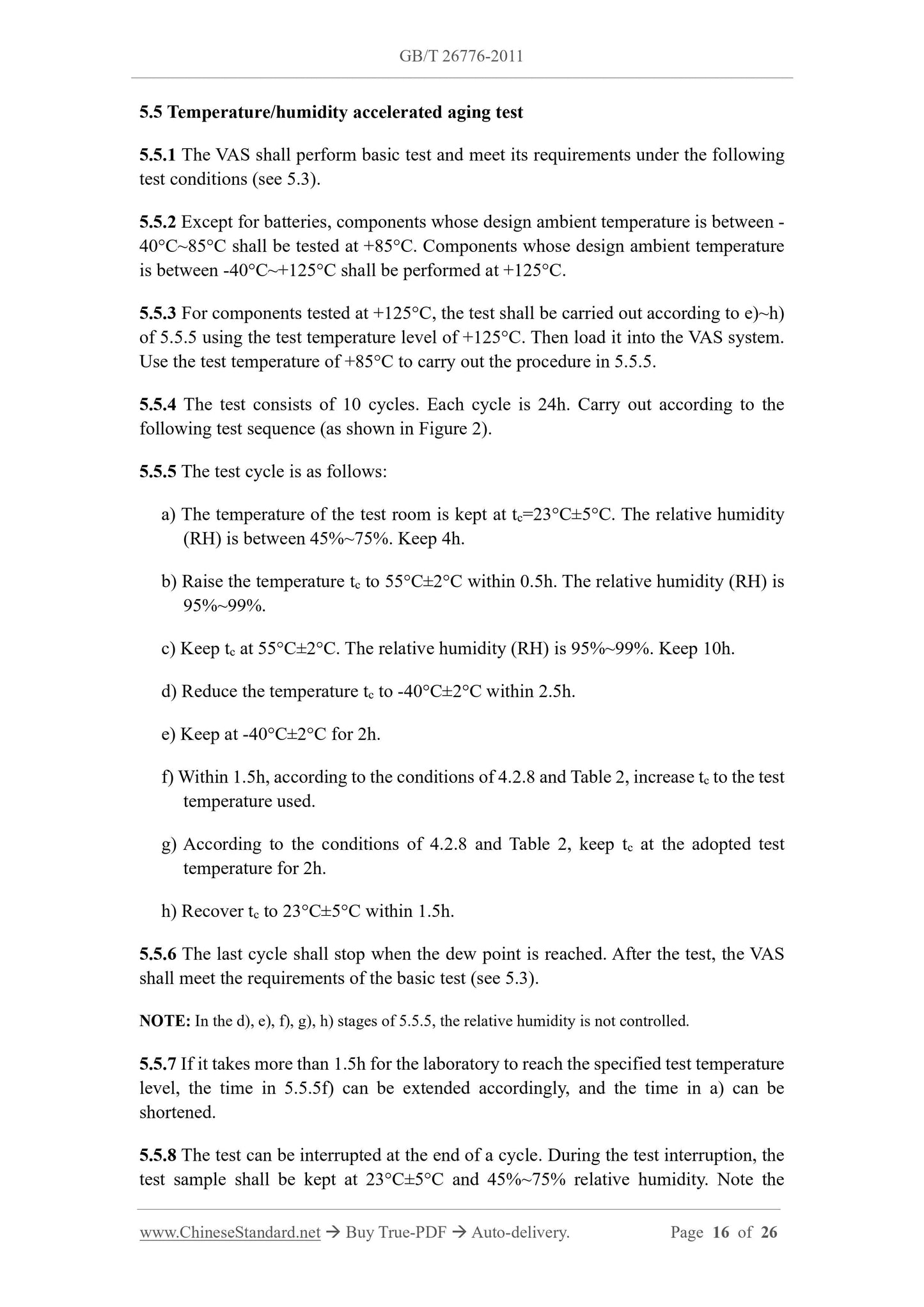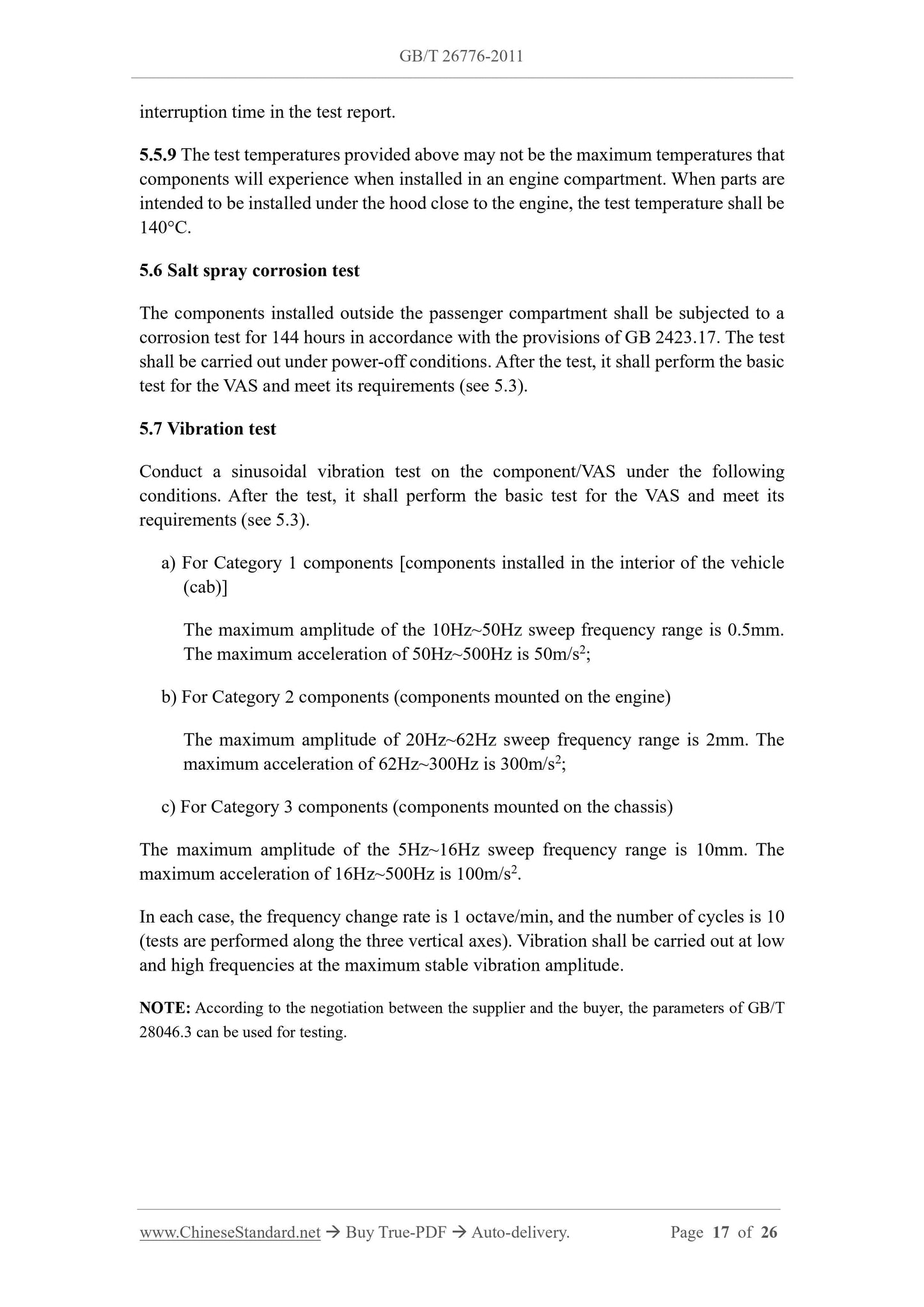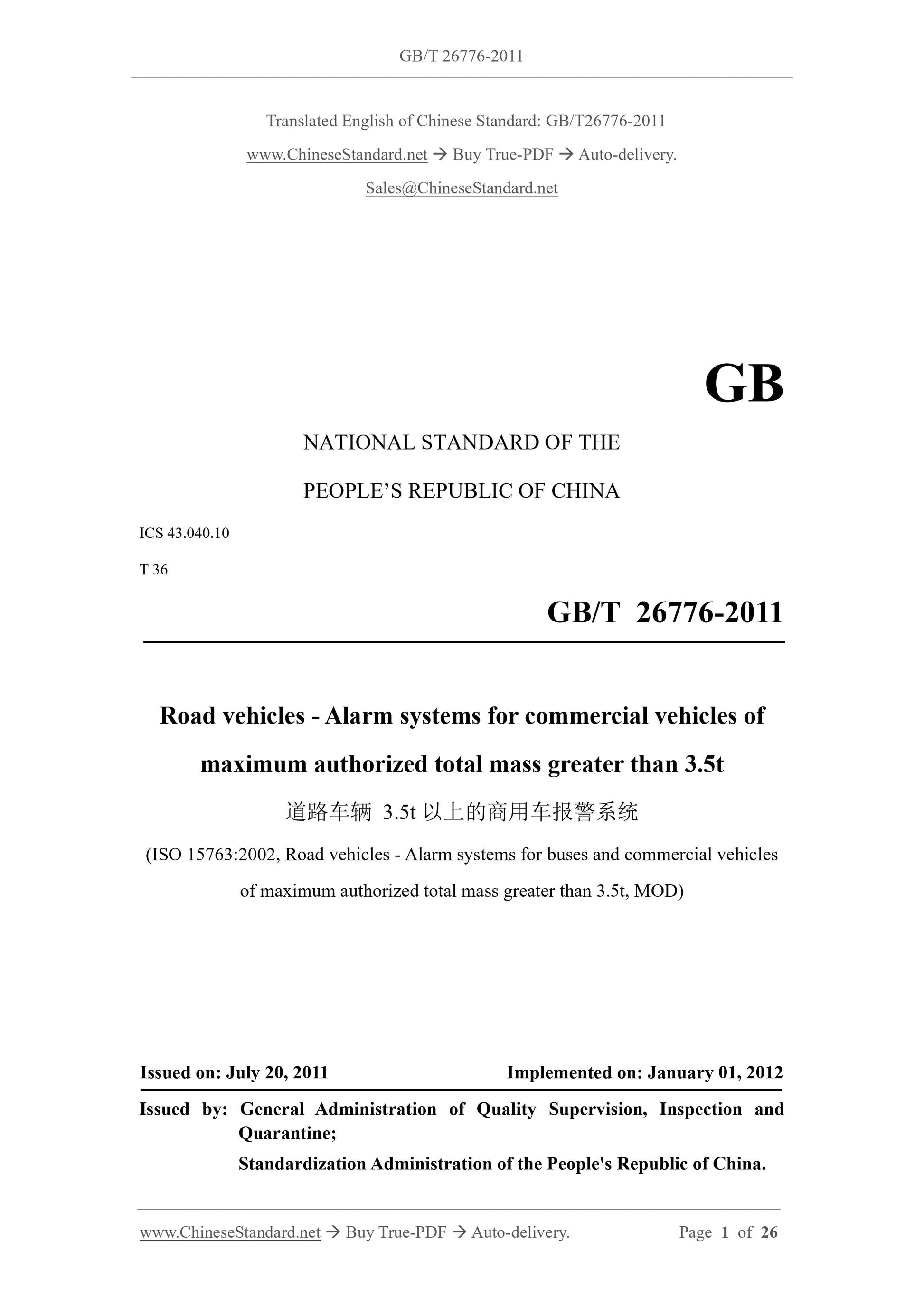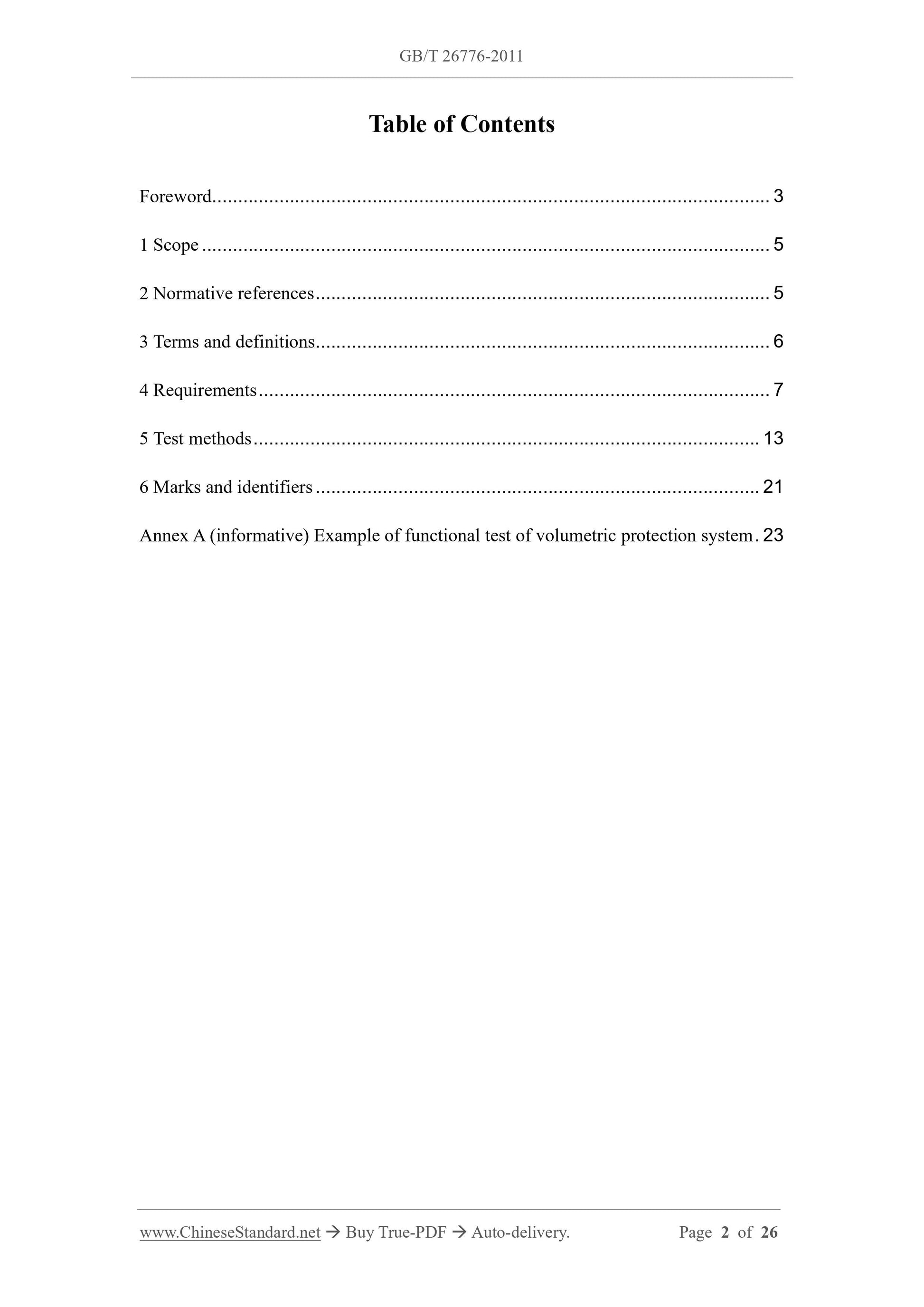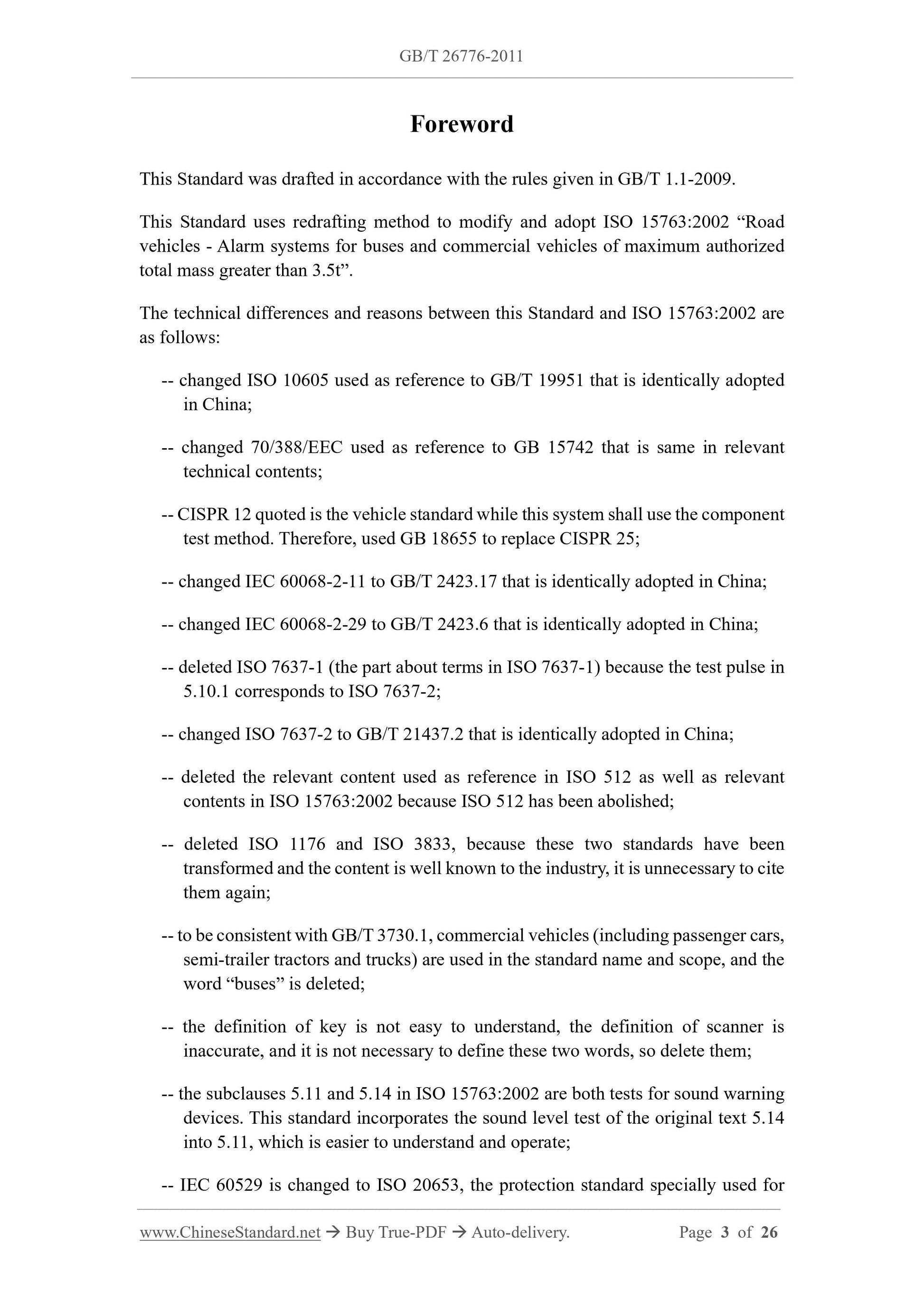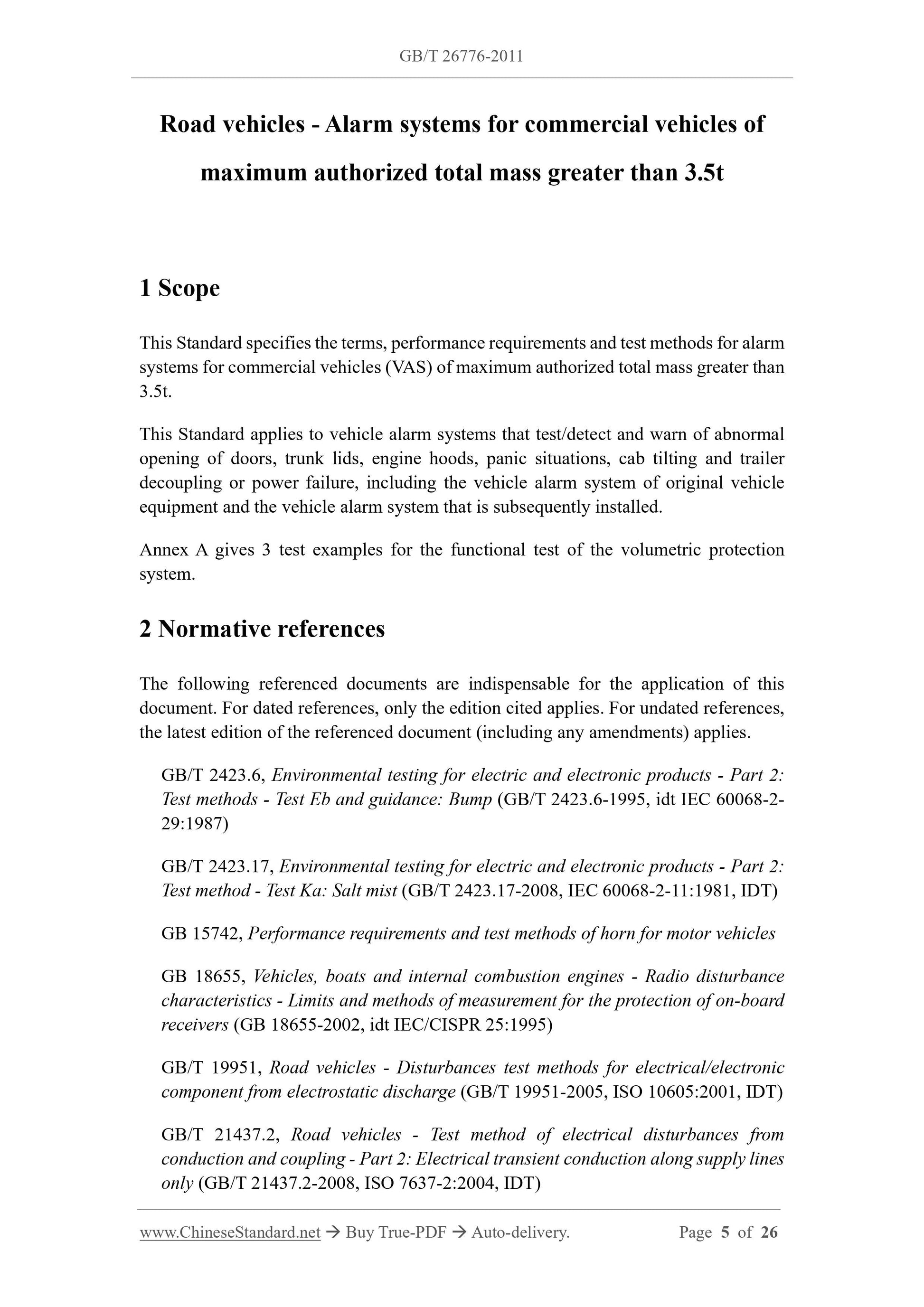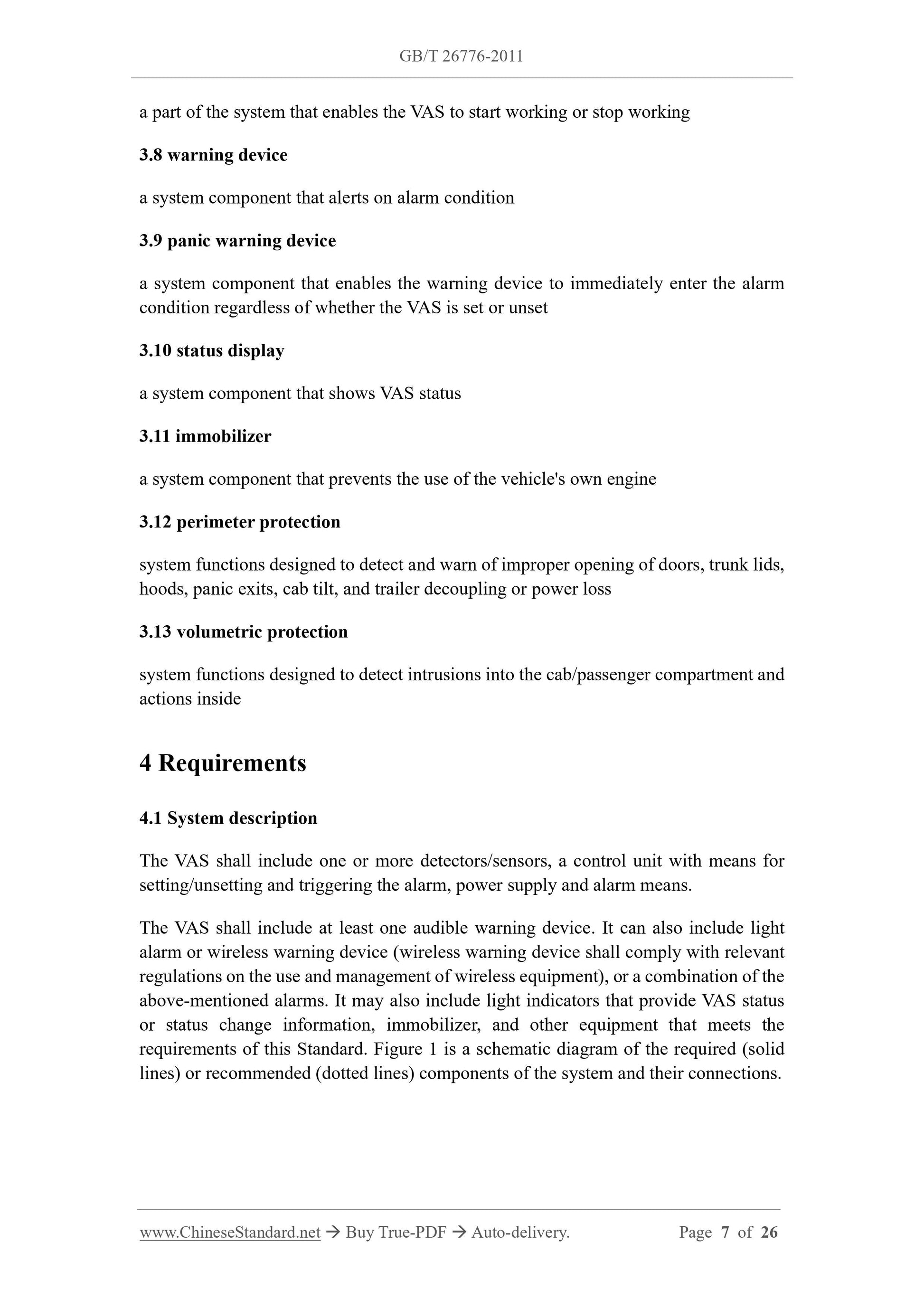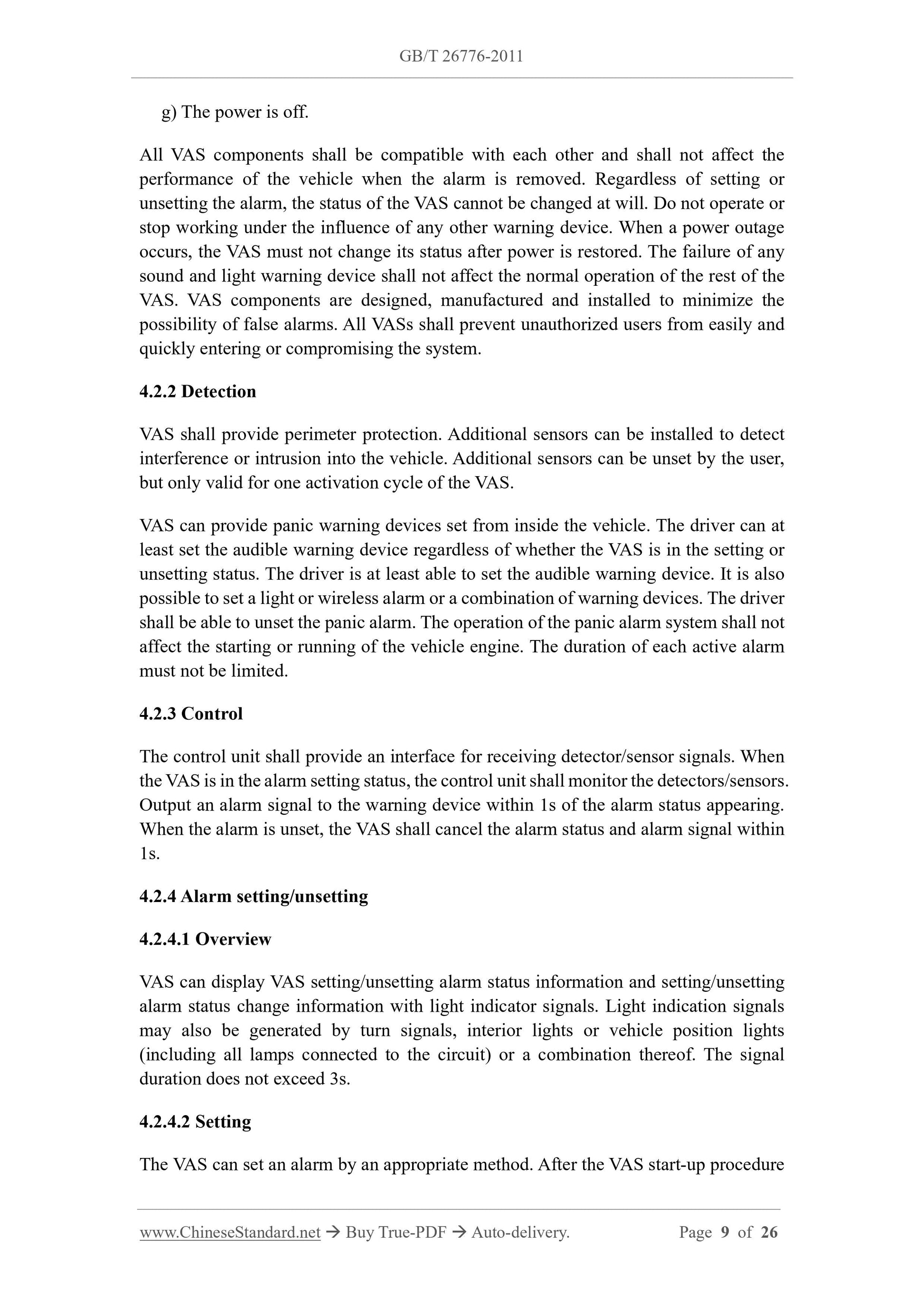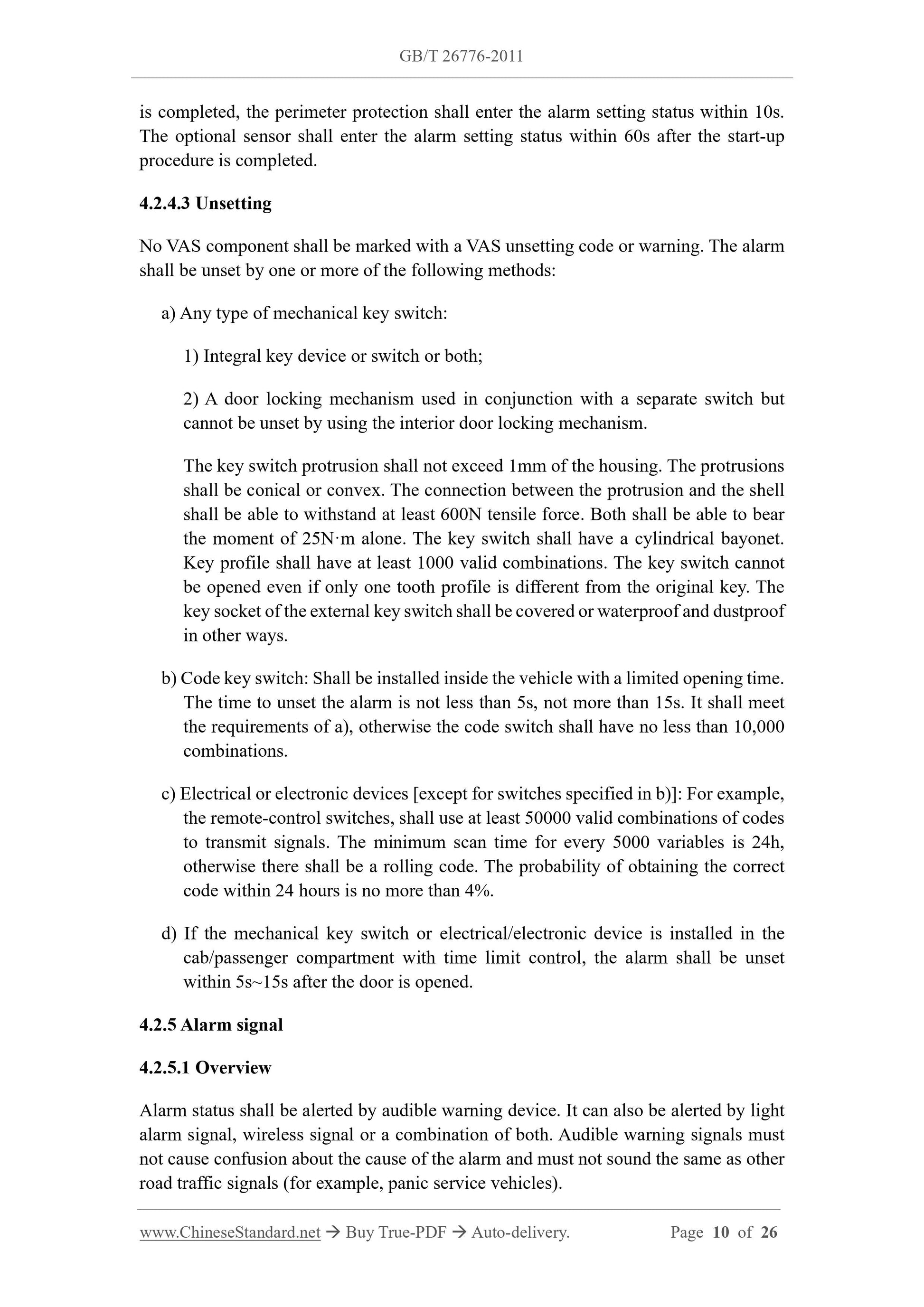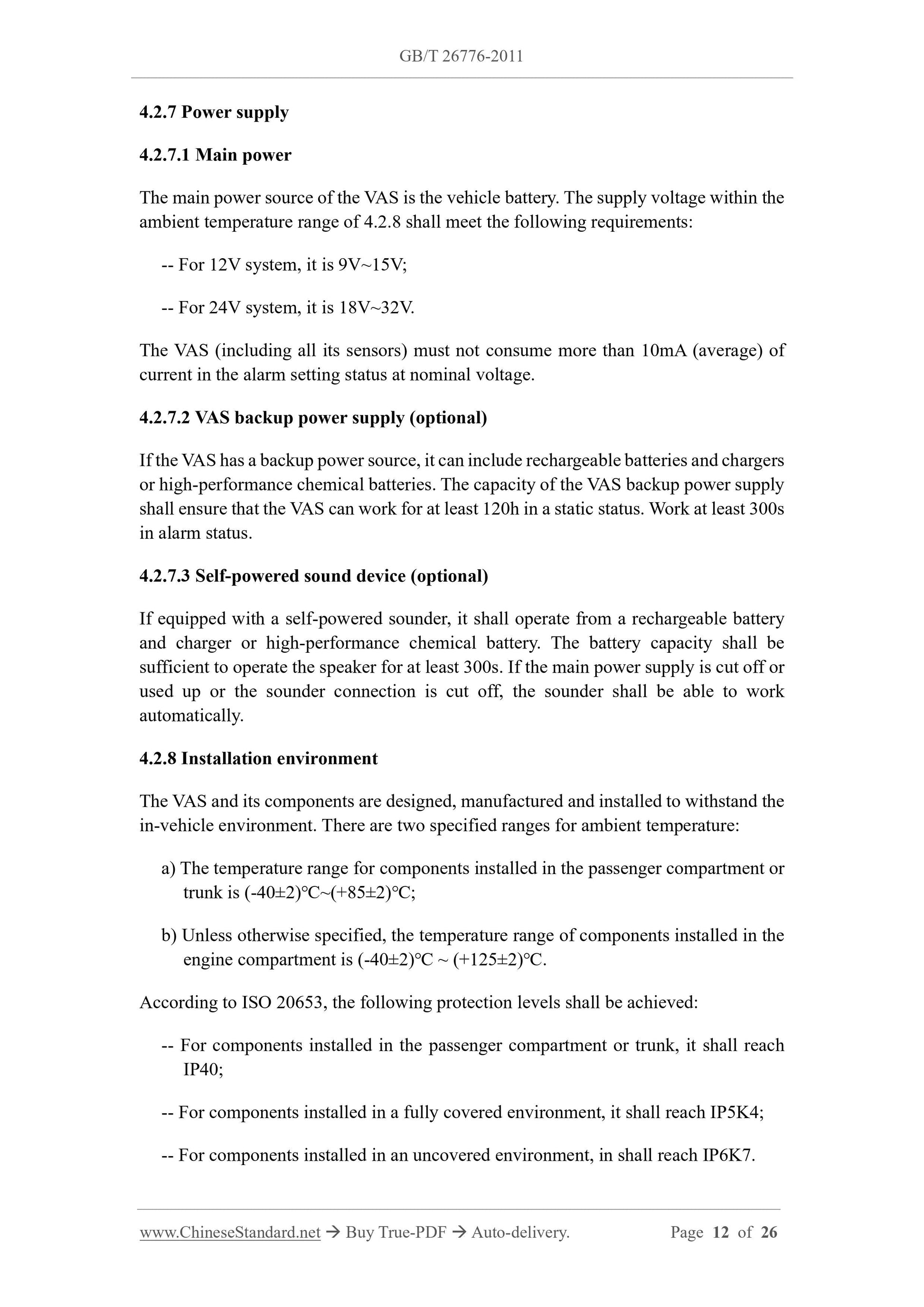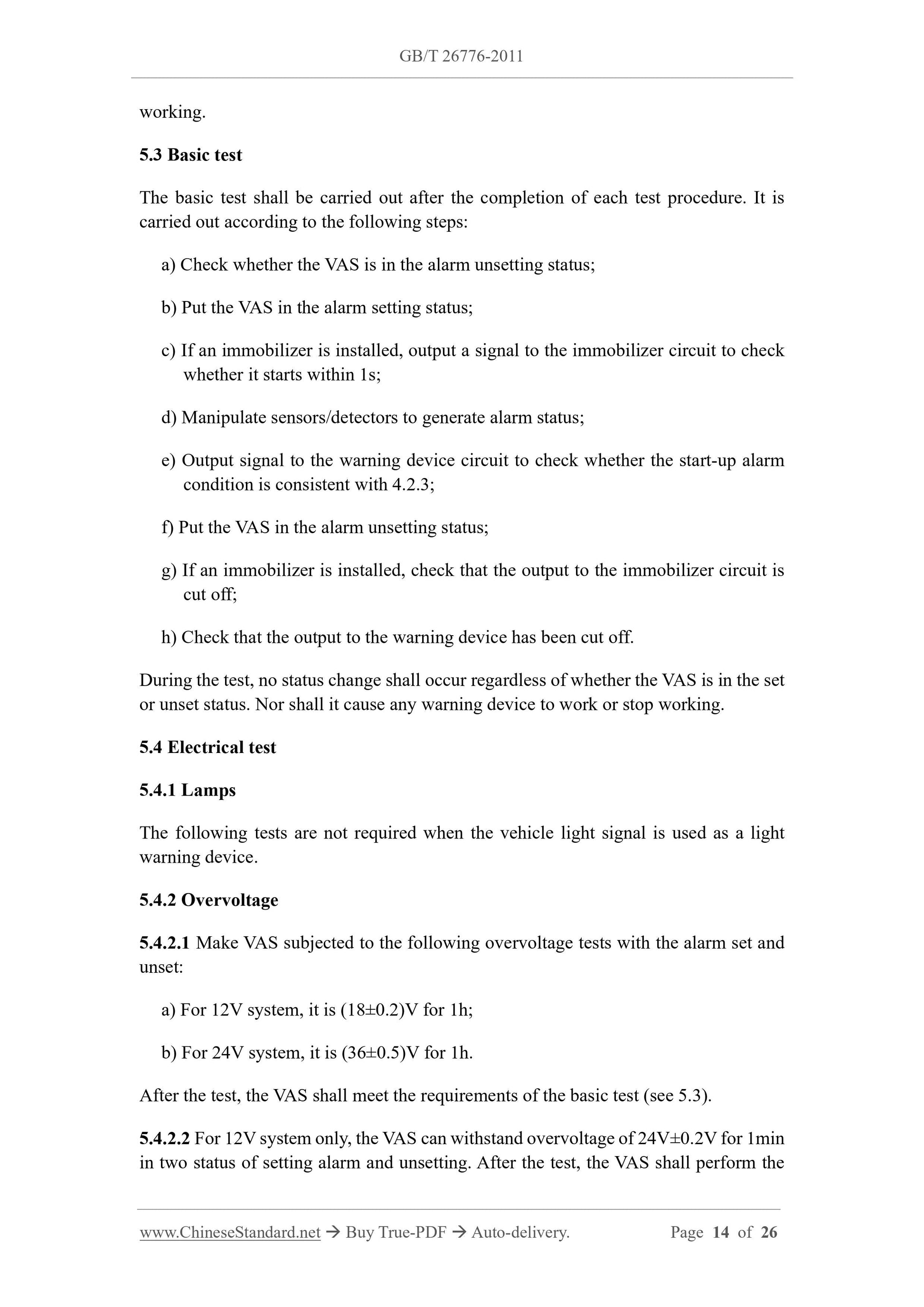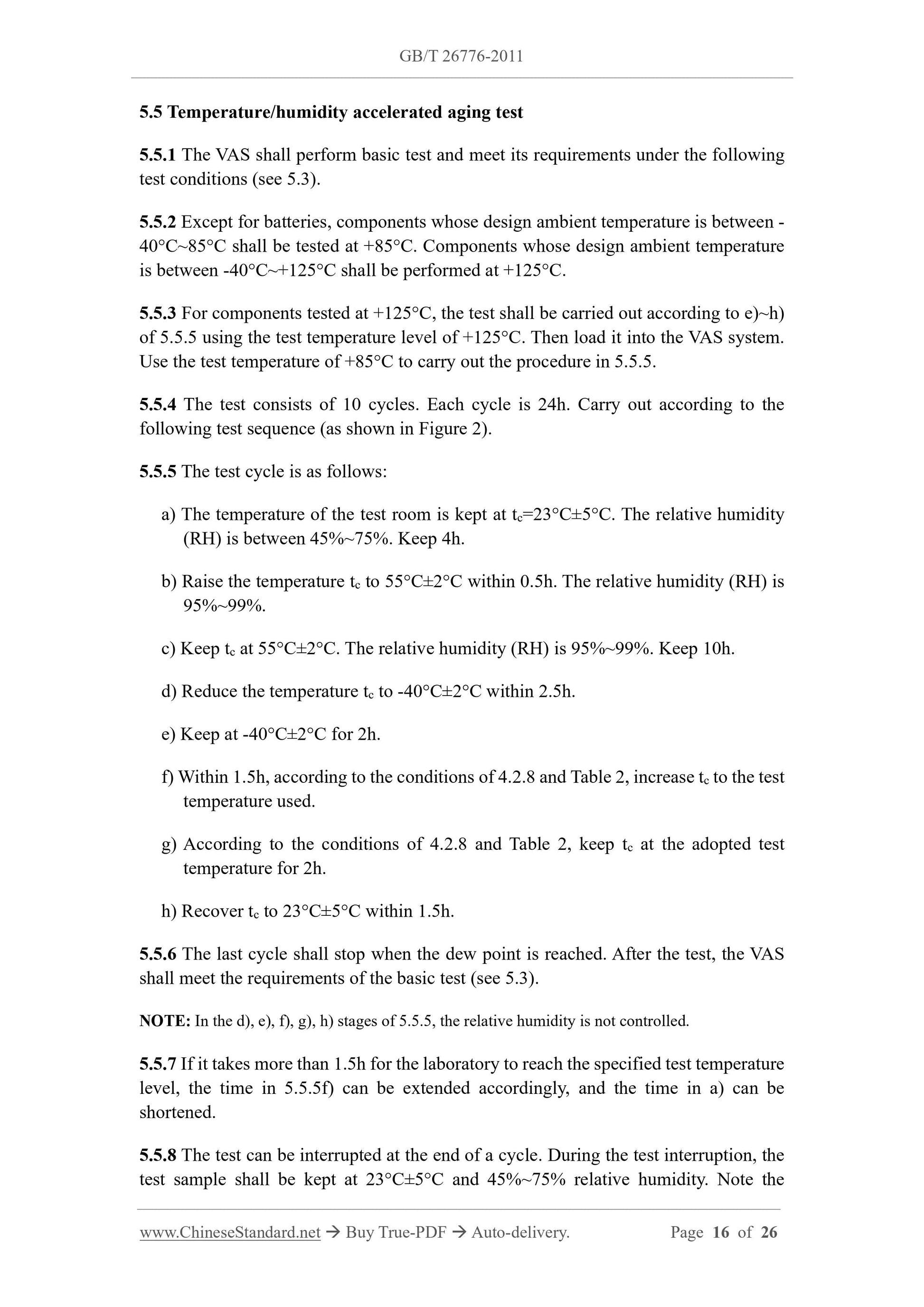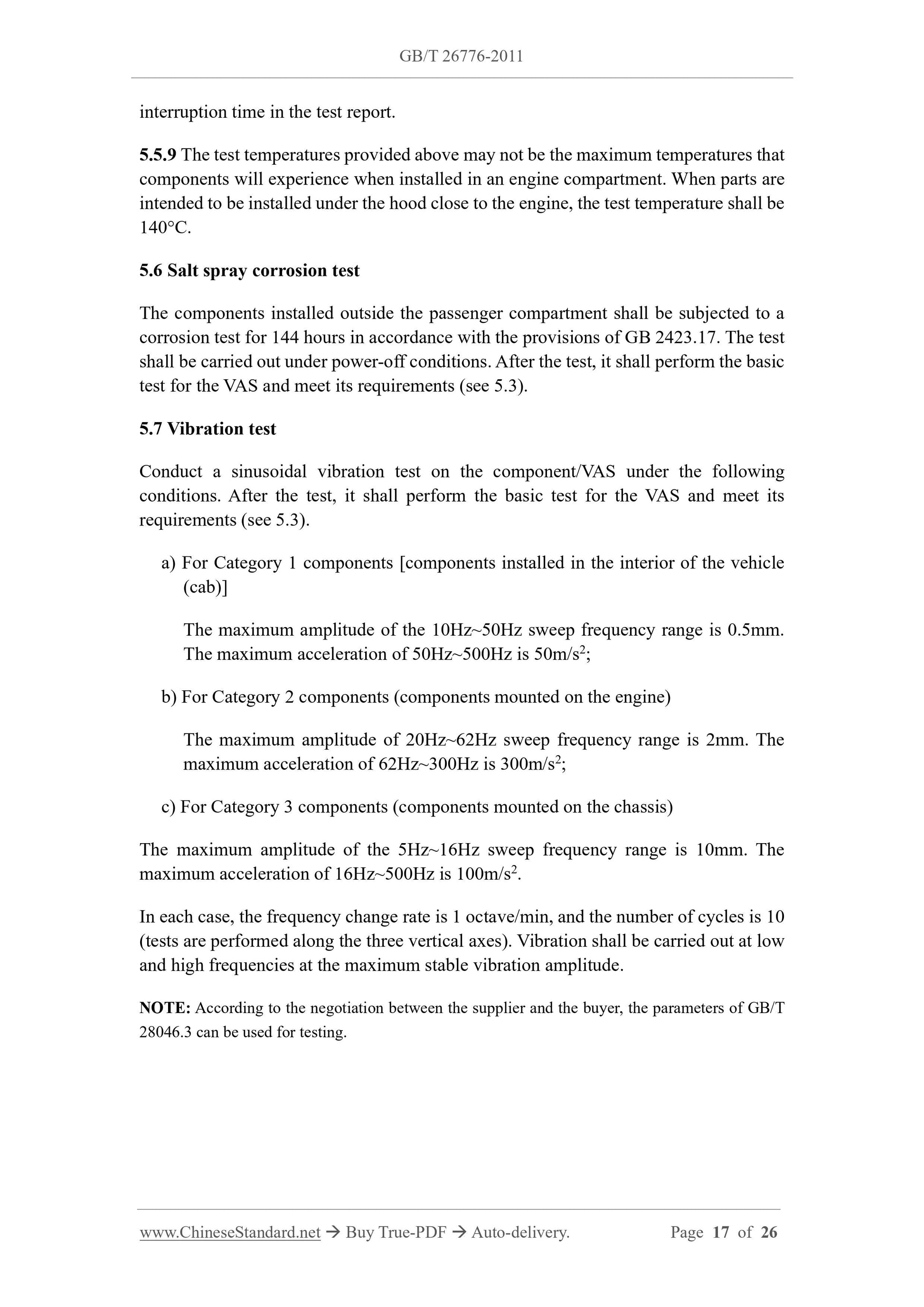1
/
of
11
www.ChineseStandard.us -- Field Test Asia Pte. Ltd.
GB/T 26776-2011 English PDF (GB/T26776-2011)
GB/T 26776-2011 English PDF (GB/T26776-2011)
Regular price
$280.00
Regular price
Sale price
$280.00
Unit price
/
per
Shipping calculated at checkout.
Couldn't load pickup availability
GB/T 26776-2011: Road vehicles -- Alarm systems for commercial vehicles of maximum authorized total mass greater than 3.5 t
Delivery: 9 seconds. Download (and Email) true-PDF + Invoice.Get Quotation: Click GB/T 26776-2011 (Self-service in 1-minute)
Newer / historical versions: GB/T 26776-2011
Preview True-PDF
Scope
This Standard specifies the terms, performance requirements and test methods for alarmsystems for commercial vehicles (VAS) of maximum authorized total mass greater than
3.5t.
This Standard applies to vehicle alarm systems that test/detect and warn of abnormal
opening of doors, trunk lids, engine hoods, panic situations, cab tilting and trailer
decoupling or power failure, including the vehicle alarm system of original vehicle
equipment and the vehicle alarm system that is subsequently installed.
Annex A gives 3 test examples for the functional test of the volumetric protection
system.
Basic Data
| Standard ID | GB/T 26776-2011 (GB/T26776-2011) |
| Description (Translated English) | Road vehicles -- Alarm systems for commercial vehicles of maximum authorized total mass greater than 3.5 t |
| Sector / Industry | National Standard (Recommended) |
| Classification of Chinese Standard | T36 |
| Classification of International Standard | 43.040.10 |
| Word Count Estimation | 18,143 |
| Date of Issue | 2011-07-20 |
| Date of Implementation | 2012-01-01 |
| Quoted Standard | GB/T 2423.6; GB/T 2423.17; GB 15742; GB 18655; GB/T 19951; GB/T 21437.2; GB/T 28046.3; ISO 7637-3; ISO 11451-1; ISO 11451-2; ISO 11451-3; ISO 11451-4; ISO 11452-1; ISO 11452-2; ISO 11452-3; ISO 11452-4; ISO 11452-5; ISO 11452-6; ISO 11452-7; ISO 11452-8; ISO 11452-9; ISO 11452-10; ISO 11452-11; ISO 20653 |
| Adopted Standard | ISO 15763-2002, MOD |
| Regulation (derived from) | Announcement of Newly Approved National Standards No. 10 of 2011 |
| Issuing agency(ies) | General Administration of Quality Supervision, Inspection and Quarantine of the People's Republic of China, Standardization Administration of the People's Republic of China |
| Summary | This standard specifies the Chinese office software functionality, reliability, usability, efficiency, adaptability, Chinese characteristics, document format, product descriptions and user documentation nine aspects of the basic requirements and compliance testing rules. This standard specifies the contents of the office software is limited to Chinese kanji version. This standard applies to: a) determine the demand side, so the Chinese office software quality requirements and product recognition criteria. b) supply-side and demand-side so the request to determine the quality assurance guidelines. According to the standard required to provide Chinese office software product descriptions and user documentation. c) evaluating the parties so and relevant national standards and user requirements, set up a test environment, test cases, completion of the Chinese office software product testing. |
Share
